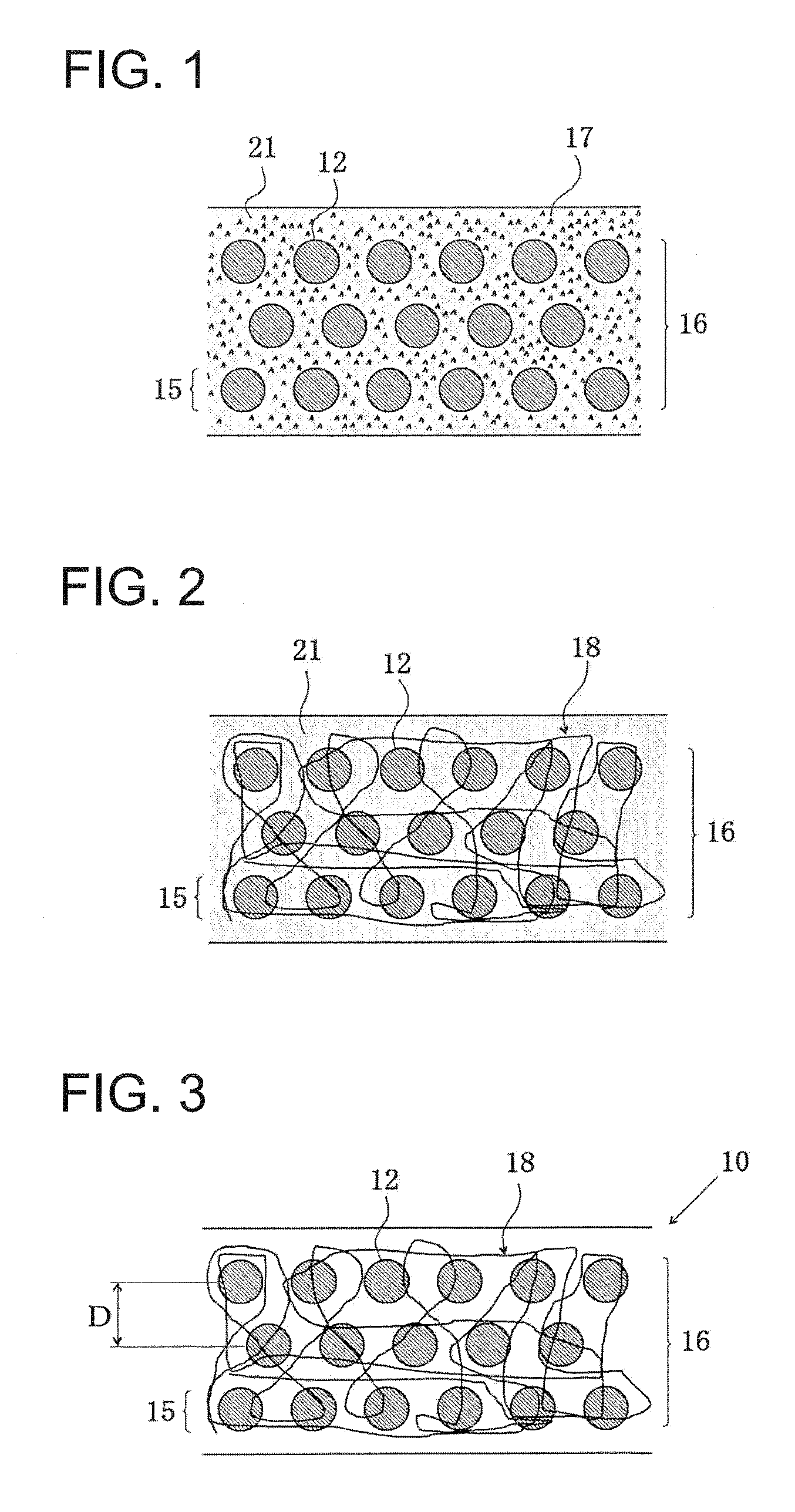Production method of particle array
a particle array and production method technology, applied in chemical libraries, library creation, combinational chemistry, etc., can solve problems such as disorder in the particle array, and achieve the effects of inhibiting disorder in the array, short time period, and high quality
- Summary
- Abstract
- Description
- Claims
- Application Information
AI Technical Summary
Benefits of technology
Problems solved by technology
Method used
Image
Examples
example 1
[0067]Polystyrene particles (average particle: 200 nm, CV value: 5%) which were prepared by an emulsion polymerization method were dispersed in a deionized water to obtain 50 g of a suspension liquid having a polystyrene particle concentration of 50% by mass.
[0068]Subsequently, 10 g of a non-crosslinking monomer, hydroxyethyl methacrylate and 10 g of a crosslinking monomer, ethylene glycol diacrylate were mixed with 10 g of water to prepare a liquid mixture. Further thereto, 0.1 g of a UV polymerization initiator, 2,2′-azobis[2-methyl-N-(2-hydroxyethyl)]propionamide was added to obtain a monomer solution.
[0069]The monomer solution was mixed with the foregoing suspension and after stirring, the mixture was subjected to a hydrophilization treatment by plasma discharge to obtain a coating solution.
[0070]The coating solution was coated on a glass plate by a bar coater at a thickness of 20 μm and exposed to ultraviolet rays to polymerize monomers by drying to obtain a coated film contain...
example 2
[0073]A particle array (2) exhibiting a structural color was obtained similarly to Example 1, except that 10 g of hydroxyethyl methacrylate was replaced by 10 of acrylamide monomer as a non-crosslinking monomer and 10 g ethylene glycol diacrylate was replaced by 10 g of methylenebisacrylamide monomer as a crosslinking monomer.
[0074]There are shown in Table 1 evaluation results of the obtained film with respect to state of the film surface, the extent of exhibited structural color and the water content, and evaluation results of the obtained particle array (2) with respect to state of the film surface, the extent of exhibited structural color and the water content.
example 3
[0075]A particle array (3) exhibiting a structural color was obtained similarly to Example 1, except that 10 g of hydroxyethyl methacrylate was replaced by 10 of polyethylene glycol acrylate monomer as a non-crosslinking monomer and 10 g ethylene glycol diacrylate was replaced by 10 g of methoxypolyethylene glycol acrylate monomer as a crosslinking monomer.
[0076]There are shown in Table 1 evaluation results of the obtained film with respect to state of the film surface, the extent of exhibited structural color and the water content, and evaluation results of the obtained particle array (2) with respect to state of the film surface, the extent of exhibited structural color and the water content.
PUM
| Property | Measurement | Unit |
|---|---|---|
| refractive index | aaaaa | aaaaa |
| refractive index | aaaaa | aaaaa |
| refractive index | aaaaa | aaaaa |
Abstract
Description
Claims
Application Information
 Login to View More
Login to View More - R&D
- Intellectual Property
- Life Sciences
- Materials
- Tech Scout
- Unparalleled Data Quality
- Higher Quality Content
- 60% Fewer Hallucinations
Browse by: Latest US Patents, China's latest patents, Technical Efficacy Thesaurus, Application Domain, Technology Topic, Popular Technical Reports.
© 2025 PatSnap. All rights reserved.Legal|Privacy policy|Modern Slavery Act Transparency Statement|Sitemap|About US| Contact US: help@patsnap.com


